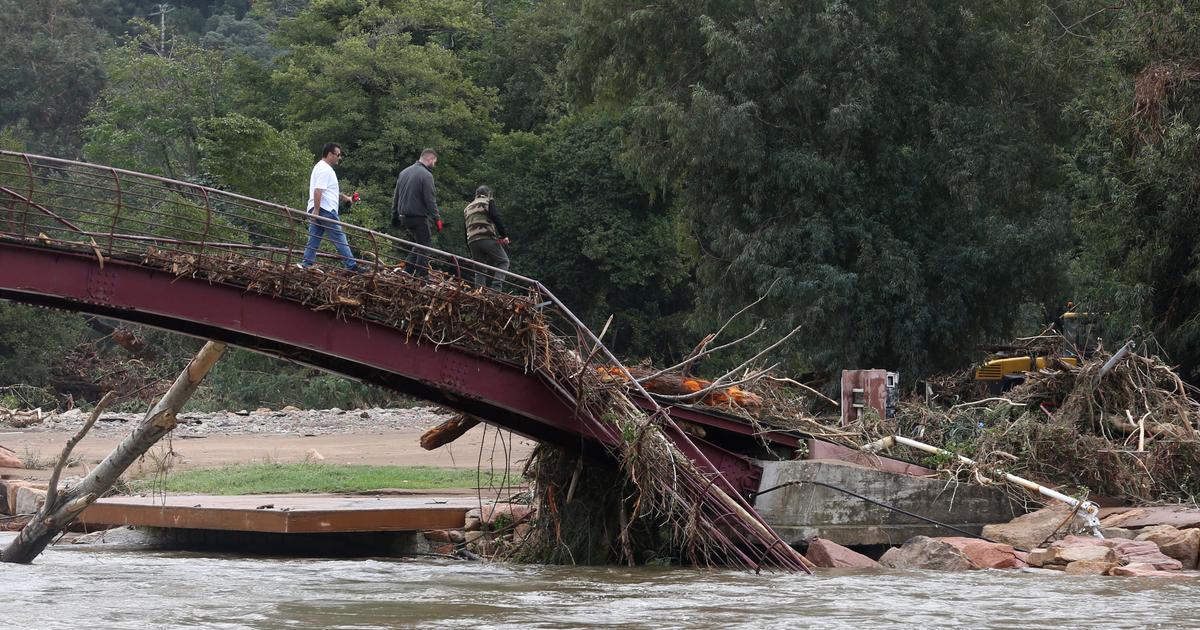More than two hundred people died during the floods that swept through Central Europe in mid-July.
Through tears, a German woman said she did not expect something like this to happen - "not here" - in a DW television video that was widely broadcast.
Powerless in the face of the floods that swept through her country, that woman's surprise defined what has happened during this new millennium: the impact of the floods has reached millions of people who were not in risk areas a few decades earlier.
Specifically, at the beginning of the 21st century, the number of inhabitants of regions exposed to severe floods, overflows and floods has grown by 24%.
And it will continue to grow.
More information
Killed in July floods in central China number 302
A study published in the journal
Nature
puts figures on the tragedy: the floods suffered between 2000 and 2018 affected between 255 and 290 million people. These catastrophes, caused by heavy rains, tropical storms, flooding due to thaws and dam breakages in the lives of between 58 and 86 million people moved to these affected regions in this period, increasing by 20% or 24% the proportion population exposed to floods. In total, 2.23 million square kilometers were flooded, the equivalent of completely flooding the combined area of Germany, France, Italy, the United Kingdom and the Iberian Peninsula.
According to Beth Tellman, lead author of the work, previous studies have used models and statistics of rainfall and terrain elevation to estimate risk, leaving many circumstances out. “Here, we use satellites to observe exposure to flooding. When we use these records, we find that the growth in the proportion of the population exposed to flooding is 10 times greater, up to 24%, than previous studies, which estimated 2% ”, he indicates, because they could observe phenomena such as dam breaks that they are not seen with the rainfall data. Tellman is scientific director and co-founder of Cloud to Street, a company dedicated to data analysis of these tragic phenomena, with which this study has been carried out, with the support of NASA and Google. The data can be consulted on its website.
Map of people affected by floods in the world Cloud to Street
The worst is yet to come, warns this study, because its model estimates that by 2030 25 new countries will add to the risk of floods to the 32 that are already experiencing them, due to climate and demographic change.
By then, more than 179 million people will be added to these flood-prone regions, the study says, especially in Asia and Africa.
In recent years, almost 90% of the floods occurred in South and Southeast Asia, affecting more people in the large basins (Indo, Ganges-Brahmaputra and Mekong).
In total, due to the evolution of climate change, land use and demographic pressures, floods and overflows will expose 758 million people by the end of this decade.
Another of the most notable factors of the study is that the population is moving towards danger zones.
"The most surprising aspect of the article for me was seeing how many people were moving to places that have recently flooded," says Tellman, a researcher at Columbia University (USA).
Population growth in flooded areas, the study indicates, is driven by vulnerable populations that often have no choice but to settle in floodplains.
In total, 2.23 million square kilometers were flooded, the equivalent of Germany, France, Italy, the United Kingdom and the Iberian Peninsula
According to Tellman, the great impact of flooding due to dam failure is also another of the most surprising factors. "While we only have 13 floods related to dam failures or overflows, we found that these few episodes accounted for more than 13 million people affected," he says. Despite representing less than 2% of floods, dyke mishaps represent the problem with the greatest increase in incidence in terms of the proportion of the population exposed, 117%.
The researcher assures that the data of her work will allow to improve regulations that prevent building in channels and invest in financial support to relocate people outside those alluvial plains.
This map, Tellman explains, will serve to "ensure that early warning systems and evacuation protocols are in place for exposed populations."
In the recent case of Germany, there has been significant controversy because the warning systems worked, but a response proportional to the level of risk predicted was not triggered.
"The most surprising aspect of the article for me was seeing how many people were moving to places that have recently flooded."
Beth Tellman, Columbia University
In addition, it will be important to repair dams and flood defenses to ensure that they do not collapse and put millions of people at risk; In the US alone, there are at least 1,600 damaged dams that pose serious risks. Finally, the data in the document can also be used to calibrate flood models so that your predictions can improve in the future.
Mangroves, coral reefs, dune systems and urban parks are natural barriers that can cushion the impact and scope of the phenomena that give rise to floods, so investing in ecological capital would be an important step.
And, logically, try to stop the global change that produces an increase in the danger of these extreme events.
Floods affect more people than any other environmental disaster and cause great economic damage: some 550,000 million euros worldwide in the first two decades of this century.
Write to us at
javier@esmateria.com
or follow
MATERIA
on
,
and
, or sign up here to receive
our weekly newsletter
.












/cloudfront-eu-central-1.images.arcpublishing.com/prisa/KMEYMJKESBAZBE4MRBAM4TGHIQ.jpg)


